 Music
Music  Music
Music  History
History 10 Less Than Jolly Events That Occurred on December 25
 Weird Stuff
Weird Stuff 10 Funny Ways That Researchers Overthink Christmas
 Politics
Politics 10 Political Scandals That Sent Crowds Into the Streets
 Weird Stuff
Weird Stuff Ten Bizarre Facts About The Doge Meme
 Our World
Our World 10 Ways Your Christmas Tree Is More Lit Than You Think
 Movies and TV
Movies and TV The 10 Coolest Stars to Set Sail on The Love Boat
 History
History 10 Things You Didn’t Know About the American National Anthem
 Technology
Technology Top 10 Everyday Tech Buzzwords That Hide a Darker Past
 Humans
Humans 10 Everyday Human Behaviors That Are Actually Survival Instincts
 Music
Music 10 Surprising Origin Stories of Your Favorite Holiday Songs
 History
History 10 Less Than Jolly Events That Occurred on December 25
 Weird Stuff
Weird Stuff 10 Funny Ways That Researchers Overthink Christmas
Who's Behind Listverse?

Jamie Frater
Head Editor
Jamie founded Listverse due to an insatiable desire to share fascinating, obscure, and bizarre facts. He has been a guest speaker on numerous national radio and television stations and is a five time published author.
More About Us Politics
Politics 10 Political Scandals That Sent Crowds Into the Streets
 Weird Stuff
Weird Stuff Ten Bizarre Facts About The Doge Meme
 Our World
Our World 10 Ways Your Christmas Tree Is More Lit Than You Think
 Movies and TV
Movies and TV The 10 Coolest Stars to Set Sail on The Love Boat
 History
History 10 Things You Didn’t Know About the American National Anthem
 Technology
Technology Top 10 Everyday Tech Buzzwords That Hide a Darker Past
 Humans
Humans 10 Everyday Human Behaviors That Are Actually Survival Instincts
10 Theological Explorations Of Futuristic Ideas
There has long been an uneasy relationship between traditional religion and the inescapable march of science. But it should not be forgotten that theologians and futurists share many qualities, including imagination, logic, and extrapolation. Here are 10 ways religious thinkers have explored ideas straight out of science fiction.
10Artificial Enlightenment
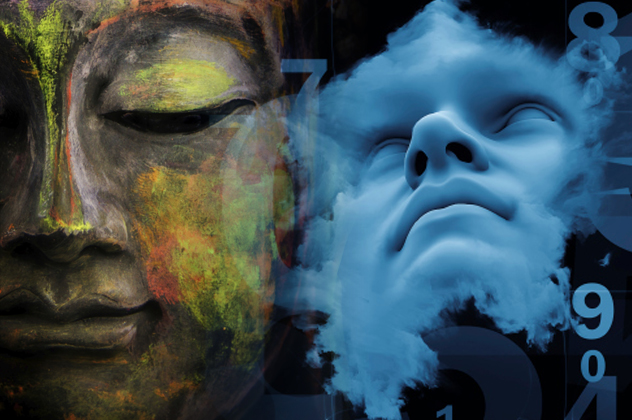
Some believe that Buddhism is the religion best suited for coping with the advent of artificial intelligence (AI), since Buddhism doesn’t necessarily prescribe a central role to the human species in its belief system. Buddhism prescribes respect for all forms of life, with some texts indicating that non-human creatures may also achieve enlightenment. Buddhist cosmology has always accepted the concept of beings existing in “formless realms,” which seems a highly appropriate way of thinking about artificial intelligence.
As Buddhism denies the existence of the self, in some ways all forms of intelligence are artificial and emergent. One Buddhist monk argued that programmed intelligence would inherently have limits and could not be therefore seen as life, but the same argument could be applied to human beings, who are in their own way equally programmable. The Dalai Lama, Thich Nhat Hanh, and other high-profile Buddhist thinkers have spoken in support of AI as a form of life.
The irony is that it’s possible that AIs will come pre-enlightened. Google researcher Mohamad Tarifi believes that rather than being antagonistic and hostile toward humanity, true artificial intelligence would exhibit traits closer to that of a Buddha or saint. His theory is based on the fact that an artificial intelligence would not have a physical amygdala, the human fear center. Without fear, an AI would not experience suffering or worries about the extinction of the ego. It also wouldn’t be threatened by us—it would merely seek to uncover truth.
Tarifi also argues that human fear is caused by the illusion of separation, while an AI would be one with everything it is connected to. The fear of AIs taking over the world, he says, stems from our own terrified egoism and our habit of projecting our own worst qualities onto an intelligence working very differently from us.
9Space Qibla
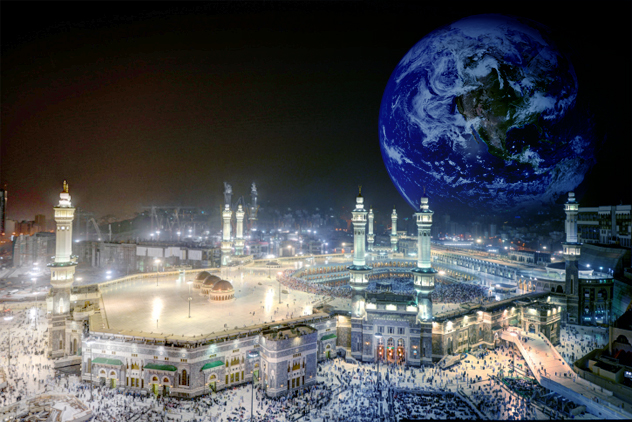
One of the largest issues facing Muslim astronauts is how to pray in the direction of Mecca, otherwise known as qibla, while in outer space. Malaysia’s space agency, Angkasa, convened a conference of 150 Islamic scientists and scholars to determine an answer, and the resulting report indicates that astronauts should make their best effort, directing their prayer in the following priority: 1) the Ka’aba, 2) the projection of Ka’aba, 3) the Earth, 4) wherever.
They also set a time frame, as a spacecraft traveling 28,000 kilometers per hour (17,400 mph) would orbit the Earth 16 times in a day, which could mean having to pray 80 times a day. The conference ruled that Muslims should perform their daily prayers according to a 24-hour cycle based on the “home” time zone of Baikonur, home of the Russian launch center in Kazakhstan.
Problems would be compounded by a Muslim praying on Mars, as Muslims pray toward the ground, in part to avoid any hint of pagan Sun or Moon worship. Some believe that praying toward the sky, even if that happened to be the direction of Mecca (because you’d be kneeling on a prayer mat in the red Martian dust) would invalidate the prayer. Others say qibla is more concerned with the intention of submission to God than the physical direction.
Malaysian astronaut Sheikh Muszaphar Shukor isn’t too worried: “In space, the ritual prayer might be offset for more of a prayer that is allowed when on jihad . . . for the lack of gravity and directional accuracy makes it legitimate to do as one sees fit. God does not take a person to task for that which is beyond his/her ability to work with.”
For some observant Muslims, the problem of facing Mecca from Mars may be academic, at least for the time being. According to the Khaleej Times, in 2014, a committee under the General Authority of Islamic Affairs and Endowment in the UAE issued a fatwa forbidding Muslims from participating in the proposed one-way trip to Mars through the Mars One project. To undertake the hazardous trip for no righteous reasons would put one’s God-given life into jeopardy, incurring a “punishment similar to that of suicide in the Hereafter.”
8Alien Baptism
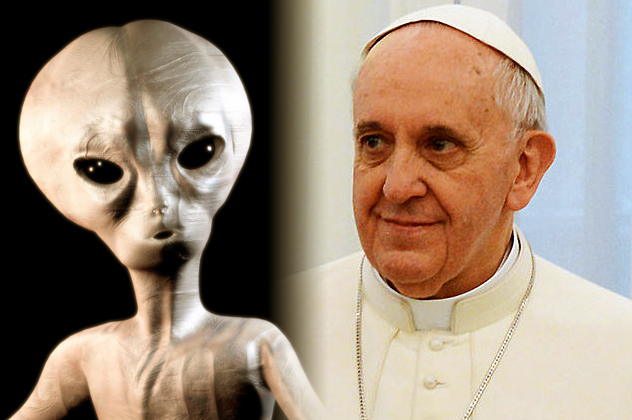
When asked in 2014 if he would baptize extraterrestrials making a pilgrimage to the Vatican, Pope Francis replied, “Who are we to close doors?” After clarifying—“Martians, right? Green, with long noses and big ears, like in children’s drawings”—he compared the situation to early conversions of pagans, also an act some considered “unthinkable” at the time.
This is actually a long-running position in the Catholic Church. In 2010, Vatican chief astronomer Guy Consolmagno declared, “Any entity—no matter how many tentacles it has—has a soul,” defining a soul as the capacity for intelligence, free will, freedom to love, and freedom to make decisions. He also said that he would baptize an alien if asked. He did admit that he thought it rather academic due to the unlikeliness of humans finding and being able to communicate with extraterrestrials, but he does believe that keeping an open mind is important.
On the issue of salvation, Vatican astronomer Christopher Corbally said, “While Christ is the First and the Last Word (the Alpha and the Omega) spoken to humanity, he is not necessarily the only word spoken to the whole universe.”
This policy is perhaps not surprising, given the Church’s history of speculation on non-human intelligences. Frankish theologian Ratharamnus wrote an essay called Epistola de Cynocephalis exploring the idea of rumored dog-headed men living in distant lands. He came to the conclusion that if reports were true of the dog-headed men making laws, performing agriculture, and “covering their privates,” then they were rational “sons of Adam” worthy of salvation.
Early Christian thinkers also argued for a plurality of worlds based on the fact that denying the possibility ran the risk of denying God’s omnipotent power over creation. Fifteenth-century theologian Nicholas of Cusa ran with the idea: “Life, as it exists here on earth in the form of men, animals and plants, is to be found, let us suppose, in a higher form in the solar and stellar region. It may be conjectured that in the area of the sun there exist solar beings, bright and enlightened intellectual denizens, and by nature more spiritual than such as may inhabit the moon who are possibly lunatics whilst those on earth [i.e., human beings] are more gross and material.”
7Robot Minyan
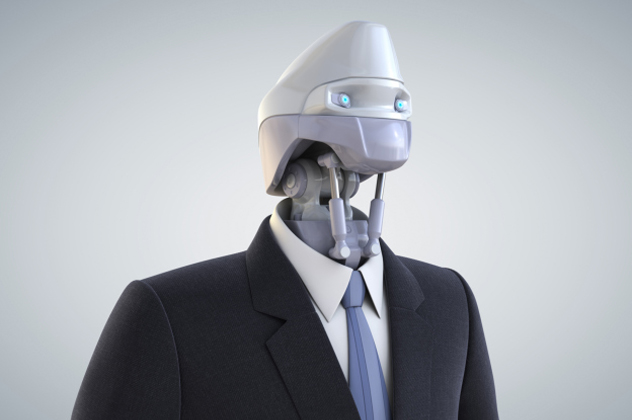
Rabbi Mark Goldfeder has declared that any self-aware robot or artificial intelligence created by a Jewish person would, by the laws of parentage, also be classified as Jewish. This would mean that a robot could theoretically participate in group prayer. He bases this on human evolution, as in primeval times the line between human and non-human was not clear-cut. He also cites the presence of creatures like mermaids, centaurs, and golems in rabbinic literature.
The Talmud, in Sanhedrin, tells the story of Rava sending a golem to Rabbi Zeira, who figures out that the golem is not human and destroys it. This was a failure by the golem to pass a version of the Turing test. If a robot or artificial intelligence could pass the Turing test and therefore be considered human, it would technically be Jewish if it had been designed and built by a Jewish person, according to Goldfeder. He says that if something looks, acts, or communicates as if it is human, then Jewish ethics dictate that it should be treated as human. As for the matter of circumcision, Goldfeder says, “In halachic terminology, we would consider him nolad mahul (i.e., it is like he comes from the factory pre-circumcised).”
There is considerable dissent to Goldfeder’s analysis. Rabbi Moshe Taub questions whether a Jewish robot could fulfill the mitzvah (commandment) of pru u’revu, which says to be fruitful and multiply. He says that a robot would lack free will and a soul and would not be born to a woman. Like Goldfeder, Taub also draws analogies between robots and golems, only he claims that there is little basis in rabbinical literature for golems to be classified as humans.
One source indicates that they are almost human, while another calls them human but says they are neither Jew nor Gentile. R. Taub concludes that there is not enough rabbinical evidence to classify a robot as a human Jewish male, meaning that it probably couldn’t participate in a minyan after all.
6Time Travel And Scripture
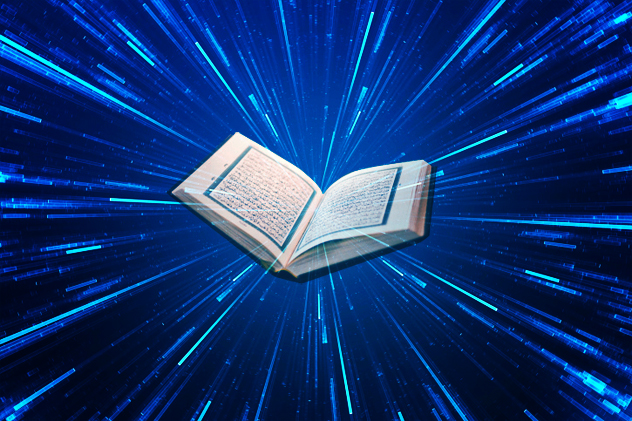
Some Islamic thinkers deny the possibility of time travel on a Quranic basis: “And if I knew the unseen, I could have acquired much wealth, and no harm would have touched me” (Surat Al-‘A`raf 7:188). The concept also appears in Surat Luqman 31:34—“And no soul perceives what it will earn tomorrow, and no soul perceives in what land it will die. Indeed, Allah is Knowing and Acquainted.” In other words, as only Allah may know the future, humans may not travel there.
As for travel into the past, some say it is contradicted by the following verse: “If we only had a chance to return (to the world), we shall truly be among the believers! Surely in that is a sign, yet most of them are not believers” (Surat Ash-Shu`ara’ 102:103). In this verse, the Quran denies the possibility of non-believers going back to mend their ways, which is seen as proof that travel into the past is impossible. There are speculations of Quranic acceptance of time-dilation effects, with references to angels ascending to receive divine instructions over the course of a day lasting 50,000 years.
Christianity has equally serious problems with the concept. Time travel by sinful humans back to the dawn of creation, or forward to the period when sin has been extinguished, would seem to be impossible as the appearance of sinful time travelers would go against biblical accounts. Time travelers operating between man’s expulsion from Eden and Armageddon would also have to be careful not to violate the timeline established by God’s will, say by accidentally killing Noah’s grandfather or interfering with the crucifixion, though as God is considered sovereign over time, this may not be such an issue. Time travelers could, however, undermine God’s prophetic power through gallivanting jaunts into the future. Furthermore, if the past could be changed, the question would then arise over how God would judge a person’s sins. If you went back in time and stopped yourself from committing a sin, would God judge your past sins according to your original timeline or the new one?
One Christian thinker believes that a form of spiritual time travel is necessary to truly become a Christian. Through faith, it is possible to travel back in a spiritual sense to the crucifixion, death, and resurrection of Christ and thereby receive sanctification. This is based on the scripture “Knowing this, that our old man is crucified with him, that the body of sin may be destroyed, to the end that we may serve in sin no longer” (Romans 6:6). This indicates that the believer is, in a spiritual sense, crucified and resurrected alongside Jesus Christ.
5Hindu Multiverse

The modern concept of a multiverse is derived from quantum physics and string theory, and there are a variety of plausible scientific theories backing up the possibility of parallel worlds. However, the concept is much older, dating to the earliest days of Hinduism. The cosmological concepts in Hinduism are already in a position to readily comprehend and accept modern physics due to their sheer scale in time and space. Ancient Hindu philosophers measured time in millions of kalpas, or eons, each one lasting about 4,320,000 years. Time scales in the Purana texts range from the truti (1/1,000,0000 of a second) to the mahamantavara (311 trillion years).
While the full details of Hindu cosmology are too complex to do justice to here, it is clear that the Hindu scriptures were adamant about the existence of infinite worlds: “Every universe is covered by seven layers—earth, water, fire, air, sky, the total energy, and false ego—each ten times greater than the previous one. There are innumerable universes besides this one, and although they are unlimitedly large, they move about like atoms in You. Therefore You are called unlimited.” (Srimad Bhagavatam 6.16.37)
The Supreme Godhead is seen to be all-powerful in every world: “Lord Siva said: ‘My dear son, I, Lord Brahma and the other demigods, who move within this universe under the misconception of our greatness, cannot exhibit any power to compete with the Supreme Personality of Godhead, for innumerable universes and their inhabitants come into existence and are annihilated by the simple direction of the Lord.’ ” (Srimad Bhagavatam 9.4.56)
On the other hand, the Brahma Vaivarta Purana provides evidence for alternate versions of the gods themselves: “And who will search through the wide infinities of space to count the universes side by side, each containing its Brahma, its Vishnu, its Shiva? Who can count the Indras in them all—those Indras side by side, who reign at once in all the innumerable worlds; those others who passed away before them; or even the Indras who succeed each other in any given line, ascending to godly kingship, one by one, and, one by one, passing away?”
4The Soul And Teleportation
While it would be amazing to hop into a teleporter and be immediately beamed to anywhere you wanted to go, the journey necessarily entails some hair-raising existential and theological questions that may just encourage you to take the bus instead. The model of quantum teleportation requires the original matter being teleported to be destroyed before being transmitted to a new location and reconstituted. Essentially, the body walking into the first teleporter is destroyed, and a new body, with the same memories and personality, is created. Where, then, is the soul? If you believe in the human soul and the afterlife, it follows that since the original has incontrovertibly died through disintegration, that body’s soul surely should have passed on to the afterlife. Is the new, reconstituted traveler a soulless husk masquerading as a human being?
Even if you don’t believe in the soul, it is a metaphysically frightening concept. Would the continuity of self-consciousness continue, or would the person going into the teleporter suffer an existential extinction, while the person leaving becomes essentially a newborn suffering the delusion of having a long history of memories? Fair enough for the receiving end, but a scary thought for anyone about to be sent.
One objection people have is the idea that there is no real reason the original has to be destroyed. After scanning, the teleporter could just create an exact duplicate at the other end, raising more questions about the soul and self-consciousness and its apparent divisibility. This would be the case in terms of the classical idea of teleportation as a body scanned and then transmitted, but in the case of quantum teleportation, this is not a problem.
Quantum teleportation works by a strange quality of the universe known as quantum entanglement, which moves quantum information between one point and another instantaneously without actually moving in the space between (nicely circumventing the universal speeding laws set at the speed of light). A teleported human being would be turned into quantum information, which would then be transmitted instantaneously and turned back into the original atomic structure.
You’re not necessarily destroyed—you just spend a brief moment in a quantum state, and there is what is known as a no-cloning theorem which states that the quantum information can’t be replicated.
3Tech-Gnosticism
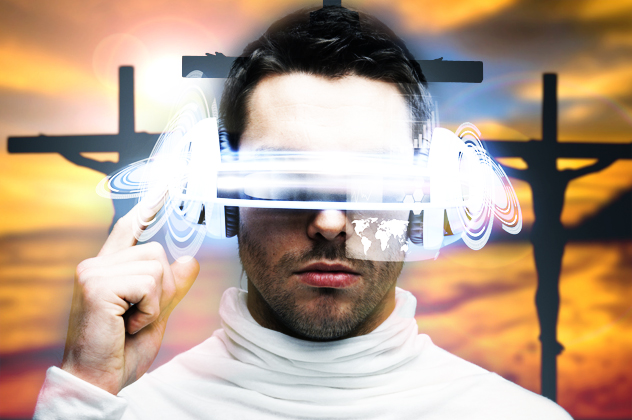
In gnostic cosmology, man is a spiritual being who once inhabited a world of light but was then trapped in a fallen, material world by a malevolent being known as the Demiurge. The faith was characterized by its rejection of the world and a fundamental sense of alienation.
Some see the rise of virtual realities as a similar worldview. Both ancient gnosticism and modern tech-gnosticism are viewed as reactions to extreme humanistic thinking by which human reason is disembodied from the sensory world. Both offer a seductive vision of escape from reality to either a spiritual realm of light or an electronic realm of infinite possibility. The task of spiritual revelation once belonging to the gnostic priest is passing into the hands of scientists and artificial intelligences.
The theological implication of this is that redemption is now being achieved by an escape from reality through technological means, while the sacredness of God’s creation is being undermined. The implications are the denial of God’s power of creation and salvation through the creation of artificial worlds of reality. The tech-gnostics essentially become mini-Demiurges—omniscient, omnipotent, and eternal within a universe of their own creation.
For Christian thinkers, this trend runs counter to the traditional belief that the physical and material world created by God is sacred, and therefore it must be criticized. Others, however, see the trend as a positive thing, a form of “cybergnosis” as the realm of the sacred moves to new realms of perception and experience, and the antagonism between spirituality and technology begins to fade away.
2Robot Animism
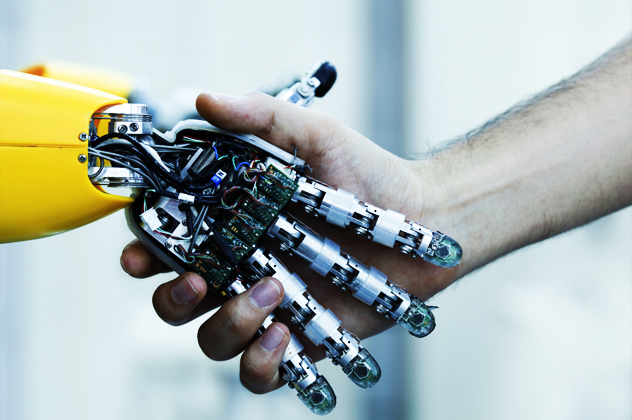
Japan has a culture and society highly accepting of robotics, from the beloved postwar icon Astro Boy to mechanized baseball players. Some see this as a natural response in a country with a low birthrate, a shrinking population, and a cultural homogeneity unreceptive to immigration. Still others see this acceptance of robotics as being rooted in the animist traditions of the Shinto religion.
Japanese traditional religion believes in the existence of spiritual forces mi (the god) and tama (the spirit) in natural forces and objects. The Sun, the Moon, and each tree and mountain was said to have its own god and spirit. Later, this belief was extended to artificial objects. Artificial tools made out of natural materials were said to contain spiritual energy. Tools were often marked with their own name and a date of first use, indicating the beginning of a tool’s spiritual existence through its owner’s use. Old or broken tools were not simply discarded but given a cremation ceremony at a temple or shrine.
It is easy to see how these ideas can be applied to robots. In 2005, Japanese robot company TMSUK took their samurai-like, humanoid robot KIYOMORI to a shrine to pray for robot safety and success. Waseda University’s Naho Kitano argues for the Japanese ethical system known as Rinri, which is largely concerned with knowing one’s place and position in society and acting accordingly. As a robot is considered a spiritual being as well as a tool, a robot’s owner is morally obliged to treat the robot well, while the robot is obliged to respect and honor its owner.
Some make the distinction between the Japanese and Western perceptions of robots. Robots are viewed with suspicion and fear due to ingrained Judeo-Christian ideas that only God can create life. To breathe life into an inanimate object is usurping the power of God and creating a false idol, a sin deserving of punishment. This perhaps explains the common motif in Western culture of robots or other artificial creations turning against their masters, as seen with Frankenstein, HAL, and Skynet. Without these cultural fears, the Japanese are much more likely to see robots as just another spiritual being with an accepted place in society.
1The Tao Of ET
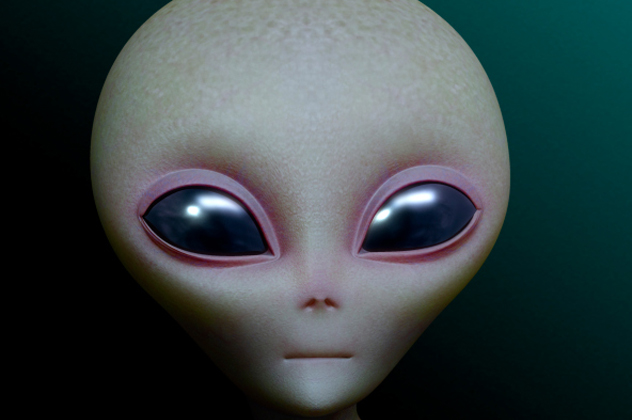
Taoist master and blogger Mak Jo Si of the Tin Yat Lineage School has speculated on the Taoist perspective on extraterrestrial life. He sees the issue from a cosmological point of view, dividing the universe into two halves: Pre-Heaven (things existing outside of the material world) and Post-Heaven (everything we can perceive, touch, or interact with). He also ties in the concept of parallel worlds, but in a unique fashion. Each planet may have its own form of human life, but they are kept separate and unable to interact in order to maintain cosmic harmony.
In his view, Mars could be teeming with life, cities, and Taoist monks of their own, but they do not interact with our realm. Taking a Post-Heaven approach, like pointing a telescope skyward or sending out a spaceship, will only allow you to reach a physical planet but not perceive the entities residing there. Similarly, a Martian astronaut landing on Earth would see little more than vaguely green rocks and sand. It is only through commitment to the Tin Yat Lineage form of Taoism that anyone can conceivably make contact with extraterrestrials. Of course, he also says the same thing about developing psychic powers and talking to ghosts.
China Uncensored, a news website working against the Chinese Communist Party and associated with the Epoch Times and the Falun Gong faith, has an example. According to them, an old monk named Huang Yousheng living in Shandong province achieved a high state of enlightenment and came into contact with an extraterrestrial being from a galaxy 3.46 million light-years away. Its name was AK5T-S9B-KUT9B92 (AK5T for short), and it was said to have come from a civilization that has been observing Earth for the last 3,000 years.
AK5T claimed that his species once lived on Earth, but one day the planet erupted in a sacred explosion of colorful rays, out of which human-like higher beings flying on lotus leaves rushed out. The aliens were suddenly transported elsewhere, and they have been trying to get back ever since. AK5T also called Darwinian evolution a bogus lie, as humans were created in perfect bodies and guided through their development by gods called Shen. If mankind continues to be obsessed with technology and forgets the teachings of the Tao Te Jing, the Shen may abandon mankind and leave us to the mercy of aliens who seek to take over our divinely perfected bodies.
David Tormsen worships the Space Gods. Email him at [email protected].








